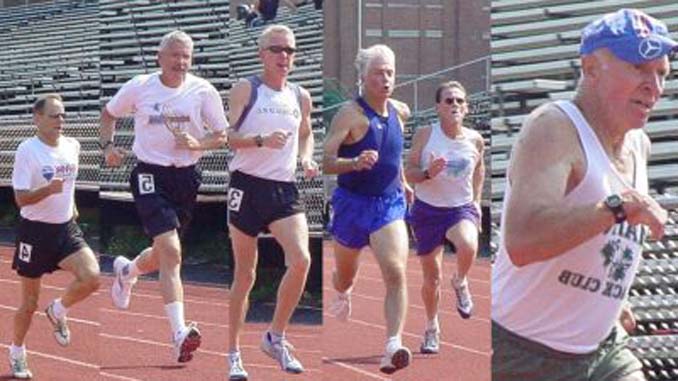
Baby Boomers Exercise to Improve Our Memory and Decrease Memory Loss
Walking for as little as two-and-a-half hours a week can significantly improve Baby Boomers memory and decrease memory loss.
The finding emerged from an 18-month study, conducted by the University of Western Australia, of 170 men and women over age 50 who reported experiencing memory problems but did not meet the criteria for dementia.
The volunteers were divided into two groups. One group continued with usual activities while the other group participated in a 24-week home-based physical activity program that encouraged participants to walk for 50 minutes, three times a week.
At the end of the six-month trial, participants in the exercise group scored better on cognitive and memory tests. Those results held steady when participants were retested six months later, and again after 12 months. The study was published Sept. 3 in the Journal of the American Medical Association.
“We know that exercise is the one intervention that has the most powerful and consistent effect on the prevention of dementia and Alzheimer’s,” says William J. Evans, director of the Nutrition, Metabolism and Exercise Laboratory with the Institute for Aging at the University of Arkansas for Medical Sciences. “So get out there and start walking.”
Exercise increases levels of brain chemicals that encourage the growth of nerve cells. This may explain why aerobic activity enhances memory skills, and why a moderately strenuous physical activity is strongly associated with successful brain aging.
Everyone can enjoy physical activity at little or no cost. It does not require health club membership, fancy machines, or spandex clothing. All it takes is a little initiative. Even moderate physical activity can impart significant health benefits.
Recent studies from the Centers for Disease Control show that getting about 30 minutes of exercise a day—even if you get in only 10-minutes at a time—on most days of the week can provide many of the same health benefits as far more strenuous activity.
And since day-to-day tasks such as gardening, walking the dog, and doing household chores count as moderate physical activity, there’s little excuse not to reap the rewards.
Exercise and Aging
Brain experts have long assumed that what’s good for your body is also good for your brain—and we all know that regular exercise is one of the best things we can do to improve overall health and well-being.
Successful aging studies have consistently shown that higher levels of physical activity are correlated with better brain aging. And exercise has also emerged as a factor that may prevent (or at least delay) the onset of Alzheimer’s disease.
How Does Exercise Affect the Brain?
Recent neuroscience reports have shed new light on this basic question, revealing some intriguing facts about how exercise affects the brain. “It’s sort of surprising to think about,” says Carl W. Cotman, Ph.D., a neurobiologist at the University of California-Irvine and a Dana Alliance member. “You’re literally building the structure of the brain, just by moving your feet.”
How Exercise Improves Your Memory
How Does Regular Exercise Help Your Brain?
Improving concentration and attention: Brain imaging studies show that highly-fit older adults have faster reaction times—an indication of better concentration—than their less-fit counterparts. They also are better able to focus on relevant information and ignore irrelevant cues, indicating better attention.
Reducing gray matter loss: Highly fit people also show less of a decrease in gray matter in the cortex than is normally seen with aging, which may suggest a protective effect of exercise against nerve cell death. This effect is most pronounced in areas of the brain involved in executive cognition that typically decline most with aging.
Promoting neurogenesis: Neurogenesis is the production of new nerve cells as a result of neuronal cell division. Laboratory animals that are allowed to voluntarily run on an exercise wheel show increases in the generation and survival of new neurons (brain cells) in the hippocampus (the area of the brain involved in short-term memory). This increased neurogenesis is associated with improved learning.
Strengthening synapses: In animals, running also increases the strength of synaptic connections. This occurs through the same molecular mechanism that is believed to underlie long-term memory formation.
Changing gene patterns: Exercise induces changes in the expression patterns of a wide array of genes, with some becoming more active and some showing less activity. Many of the genes that become more active are known to play roles in the structure and adaptability of synapses, suggesting a direct role for exercise in synapse density.
Increasing growth factors: Growth factors are molecules that promote the health of specific cells; they are produced by cells other than the ones they nourish. Nerve growth factors (neurotrophins) play vital roles in nourishing and supporting nerve cells. A growth factor called BDNF (for brain-derived neurotrophic factor) increases significantly in the brains of animals that run voluntarily. Separate studies show that when people with depression exercise in addition to taking antidepressants, their BDNF levels go up and their depression symptoms decrease.
Enhancing blood flow: Exercise also increases the density and size of brain capillaries, which has the effect of increasing blood flow and oxygen to the brain. This may, in turn, help support the survival of new neurons and facilitate faster “firing” by neurons.
BOOK: Memory: Boost Your Memory with Easy Exercises – Improve Your Mental Focus in Everyday Life (Improve memory, improving memory, remembering more, productivity improvement)




